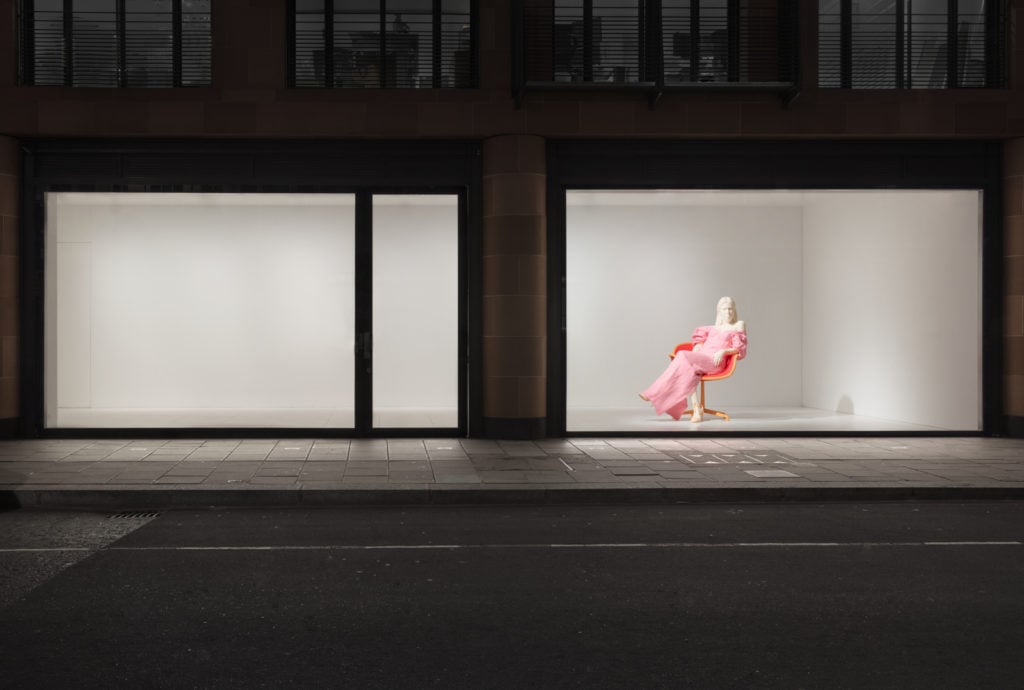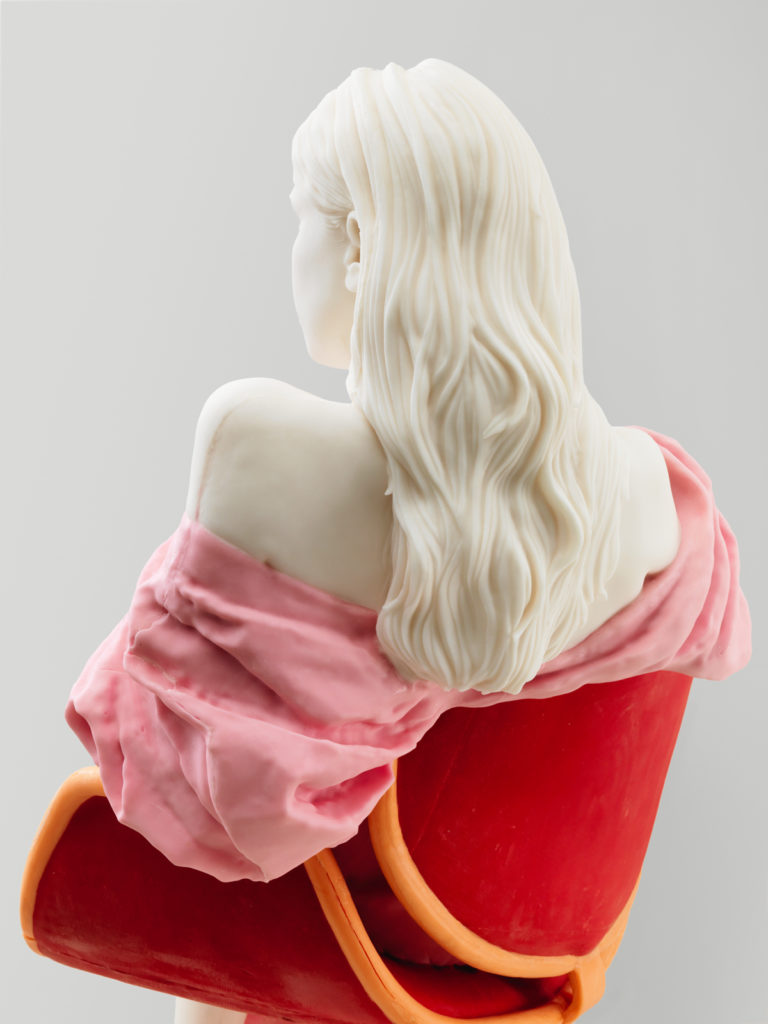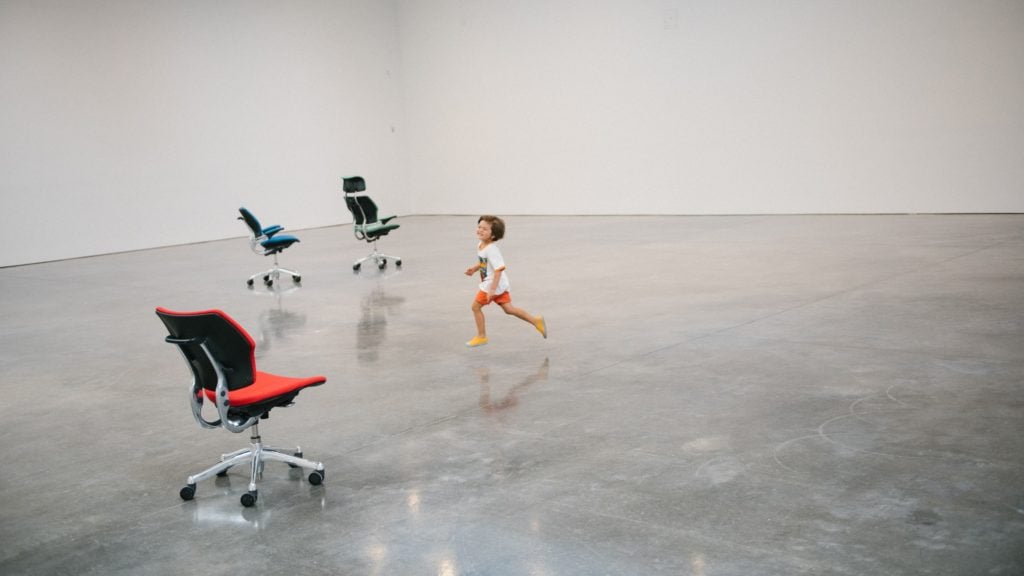Art World
Artist Urs Fischer Transforms Collector Dasha Zhukova Into a Giant Wax Candle—Then Burns Her to the Ground
The Swiss artist sculpted the Russian arts patron into his latest wax figure.

The Swiss artist sculpted the Russian arts patron into his latest wax figure.

Henri Neuendorf

Urs Fischer is burning the art world down to the ground—again.
At Gagosian’s Davies Street gallery in London, the Swiss artist presents the latest iteration in his series of wax-cast art-world figures. This time, a life-size figure in the form of the Russian collector and Garage Museum founder Dasha Zhukova is seated in a chair and clad in a pink dress—that is, until she melts into wax drippings like a giant candle.
At the start of the show on Monday, a wick on the top of the Zhukova figure’s head was lit; it will slowly burn the sculpture down over the course of the exhibition.

Urs Fischer Dasha (installation view) (2018). © Urs Fischer Photo: Lucy Dawkins. Courtesy of the artist and Gagosian.
The wax figure series is a cheeky play on the transience of human existence and the impermanence of art, challenging the assertion of Greek physician Hippocrates that art is long, life is short (Ars longa, vita brevis). In Fischer’s world, it seems, both are short.
Whether you agree or not, it’s undeniably fun to watch art-world heavyweights slowly burn to the ground. Some of Fischer’s “victims” have also included artist Julian Schnabel, artist Rudolf Stingel, and dealer Bruno Bischofsberger.

Urs Fischer Dasha (2018). © Urs Fischer Photo: Stefan Altenburger
Courtesy of the artist and Gagosian.
“They come about from a variety of instances,” Fischer told artnet News in a call. “In Dasha’s case, she contacted me, and I told her I would think about it because before her I only did men. I was interested in the way different men choose to present themselves, some need to wear a suit and glasses to be a man, and other’s are more naked, and don’t need this type of armor.”
Turning a sculpture into a giant candle, he says, is “a bit like a Rorschach test because what you see is variable, depending on where you come from or what day it is.” But for Fischer, “it’s not about the concept, it’s about the transformative process that takes place.” Whether you interpret the fire as a sign of life or view it as a memento mori reminder is up to you, he insists.

Urs Fischer Play (2018) (installation view). Photo: Chad Moore, © Urs Fischer.
Meanwhile, across the pond at Gagosian’s Chelsea space in New York, Fischer is showing a very different type of work. An installation by the artist features nine colorful office chairs controlled by artificial intelligence that seemingly roll around the cavernous space on their own.
Asked about the relationship between the two discrete works, Fischer said, “It’s also an active sculpture, you see. The core thought is a person’s effect on something within a space, a person’s various psychological behaviors, and the interplay between them. So, in a way, maybe they’re not connected—they’re just two works you know.”